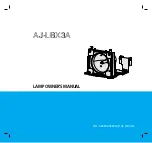
Zynq-7000 AP SoC and 7 Series FPGAs MIS v4.1
168
UG586 November 30, 2016
Chapter 1:
DDR3 and DDR2 SDRAM Memory Interface Solution
Write Path
The write data is registered in the write FIFO when
app_wdf_wren
is asserted and
app_wdf_rdy
is High (
). If
app_wdf_rdy
is deasserted, the user logic needs to
hold
app_wdf_wren
and
app_wdf_end
High along with the valid
app_wdf_data
value
until
app_wdf_rdy
is asserted.
app_wdf_data
data can be pushed even before
app_cmd
"write command" is asserted. The only condition is that for every
app_cmd
"write
command," the associated
app_wdf_data
"write data" must be present. The
app_wdf_mask
signal can be used to mask out the bytes to write to external memory.
As shown in
, the maximum delay for a single write between the write
data and the associated write command is two clock cycles.
The
app_wdf_end
signal must be used to indicate the end of a memory write burst. For
memory burst types of eight in 2:1 mode, the
app_wdf_end
signal must be asserted on the
second write data word.
The map of the application interface data to the DRAM output data can be explained with
an example.
For a 4:1 Memory Controller to DRAM clock ratio with an 8-bit memory, at the application
interface, if the 64-bit data driven is 0000_0806_0000_0805 (Hex), the data at the DRAM
interface is as shown in
. This is for a Burst Length 8 (BL8) transaction.
X-Ref Target - Figure 1-76
Figure 1-76:
2:1 Mode UI Interface Back-to-Back Write Commands Timing Diagram
(Memory Burst Type = BL8)
X-Ref Target - Figure 1-77
Figure 1-77:
4:1 Mode UI Interface Back-to-Back Write Commands Timing Diagram
(Memory Burst Type = BL8)
















































